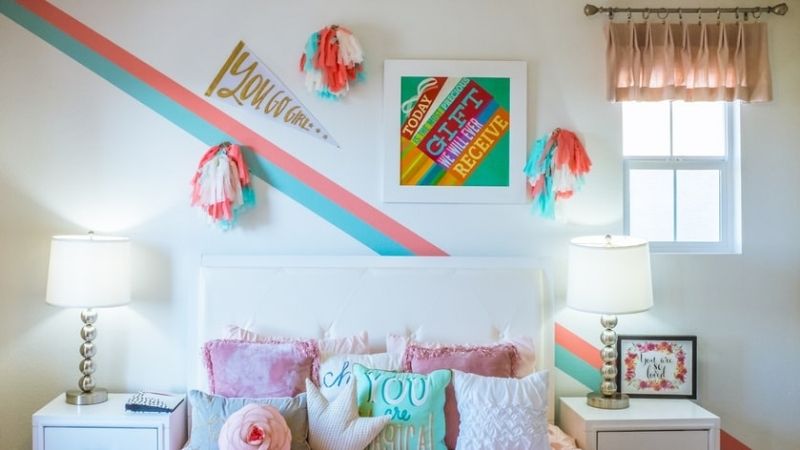Your child’s bedroom is a multifunctional space that will change several times as they get older. It is somewhere safe where they sleep, play, use their imagination, entertain their friends, and study. Of course, they should have an input in how you decorate the room, but any parent knows that their likes and interests can be changeable. Listen to their ideas and see if you can come up with a solution that is not too costly or permanent. The key is to keep the design as flexible as possible while still letting them put their own personality on display. Here are six tips to keep in mind when designing a child’s bedroom.
1. Pick a neutral wall color
To prevent the need to repaint the walls every year as your child grows and changes, consider going for a neutral color. You can then bring the theme and your child’s personality to life through art, posters, patterns, and accessories.
2. Maximize storage
It can be difficult to keep a child’s bedroom tidy and organized, which will quickly undo all the great design work you’ve done. Be sure to include plenty of storage options in the room for toys, clothes, books, and ornaments. You could add storage boxes, shelves, hooks, baskets, or a chest of drawers.
3.Go all-in on one piece of furniture
Most parents work to a budget when redesigning a child’s bedroom as they know it is only a matter of time before the child will have new interests. If you are going to invest in any part of the project, make it one piece of stand-out furniture like a bed or wardrobe. You can buy new or get something second-hand and upcycle it to suit the room’s theme. Click here for more information on upcycling.
4. Use art and soft furnishings to add color
Rather than painting entire walls in bright colors and patterns, why not add some visual interest and color with some framed art? There are some beautiful pieces of art that can bring the theme of the room to life, and the colors can be picked out by rugs, cushions, curtains, and bedding. The art can then be easily changed as the child’s interests evolve or they get older.
5. Choose personalized accessories and decorations
Simple walls and some brightly colored art will be practical and attractive, but you still want your child to feel like the room is theirs. To do this, you can add some wall hangings, bunting, removable wall stickers, ornaments, and decorative pieces that represent their interests. If your child is a fan of unicorns, for example, head over to Finding Unicorns for a range of toys and accessories.
6. Include lots of lighting options
The main ceiling light should be dimmable so that you can adjust the brightness in the room depending on what the room is being used for. In addition to the main ceiling light, you could also bring in some other types of lighting to give them several different options. For example, a string of fairy lights, a bedside night light, or a reading lamp on a desk will make the room more multifunctional whether they want to be cozy, play, do their homework, or sleep.




